











Marine animal rescue network
Anglesey Sea Zoo is part of a rescue network for stranded or sick marine animals, including dolphins, whales, porpoises, seals, turtles and seabirds. The network consists of people and organisations who can respond to a stranding and is being built up around the British Isles by the British Divers Marine Life Rescue (BDMLR). The extra skills held by some of the staff at Anglesey Sea Zoo allow them to also handle seabirds and turtles and to advise on their rescue.
Please note that while we can help coordinate the rescue together with BDMLR, we are NOT a rescue centre and may not have the facilities available to hold injured marine mammals or birds.
If you find a stranded animal, please call BDMLR or the RSPCA first – details below!
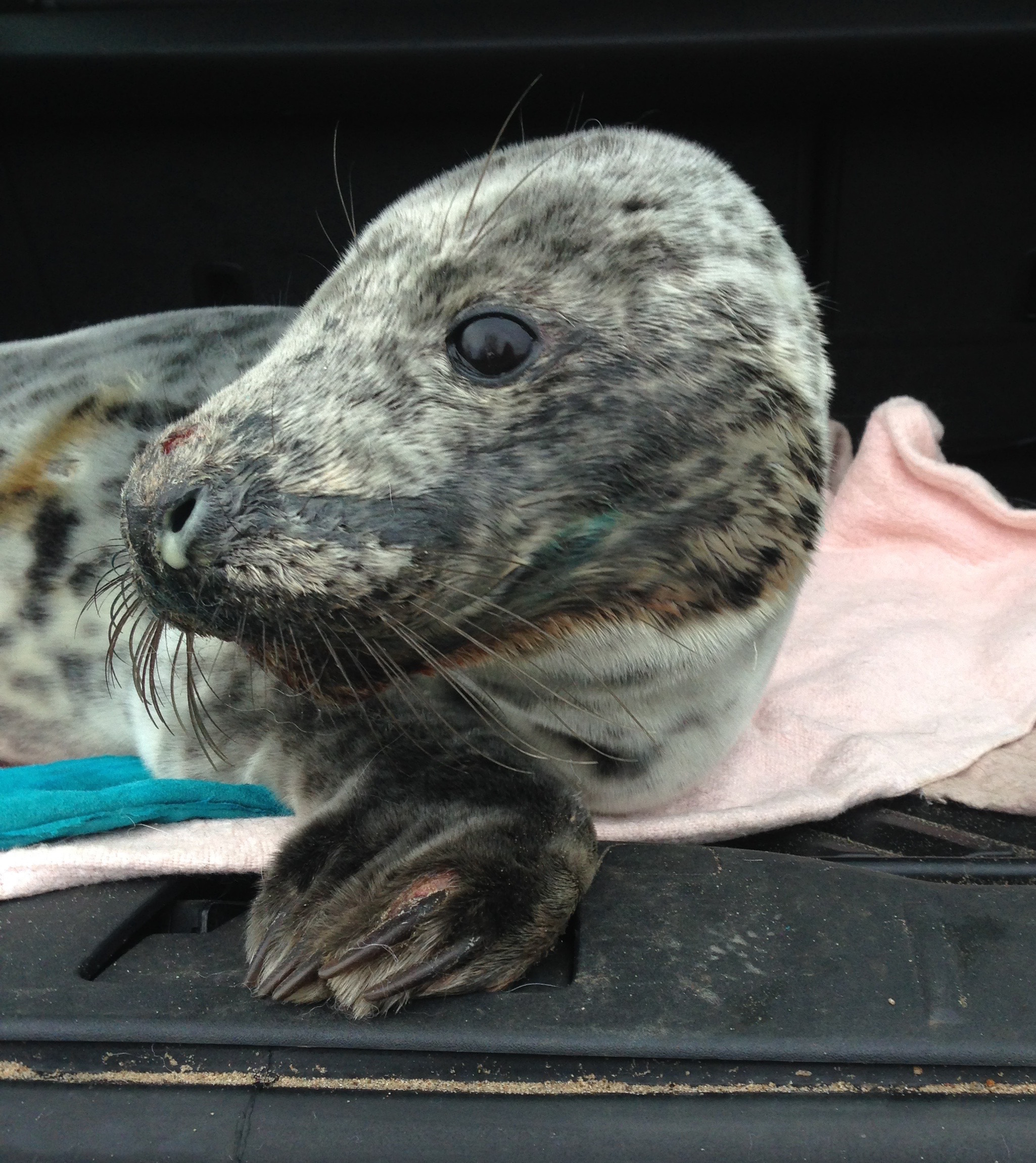
What to do...
If you find a stranded animal
Many stranded animals stand a chance of recovery with the right expert care, so calling for professional help quickly is essential if you find a stranded animal.
If you find a marine animal that needs help, call:
- Seals: RSPCA Hotline (England and Wales) 0300 1234 999
- Whales and dolphins: BDMLR Rescue hotline 01825 765546 during office hours, 07787 433412 out of office hours
Please note that stranded seals may simply need some time to rest and gather their strength before returning to the sea! In most cases the best thing to do is to leave them alone and undisturbed unless the animal is injured or unresponsive.
When you call, please give as many details as possible about the exact position of the animal so that the rescue team can find it as quickly as possible upon arrival. This includes the exact stretch of beach, distance from the tide line, any nearby landmarks and the nearest car park or access point. You will also be asked questions about the animal to establish exactly what species it is.
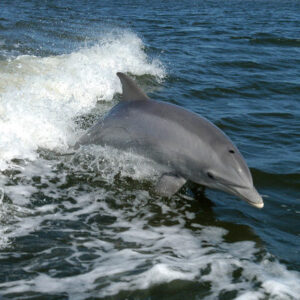
Whales, dolphins, porpoises and turtles
Until help arrives, the following can be done:
- Keep the animal wet and shaded from sun if possible, preferably by covering it in a wet sheet or blanket (keep cetaceans’ blowhole clear!) It is particularly helpful to cover the eyes as this calms the animal.
- DO NOT attempt to move the animal unless it is absolutely necessary.
- Turn the animal onto its belly (if not already) taking care not to damage the flippers.
- DO NOT put water down the blowhole of cetaceans or cover or block the blowhole.
- DO NOT attempt to put the animal back in the water without expert advice. This is particularly important for turtles.
- Try to keep the area quiet and keep dogs and large numbers of people away.
Seals and seabirds
- If possible, observe and follow the animal from a safe distance away. Often, these animals will appear to be sick or stranded but will then recover when left alone, or if they are youngsters their parent will appear.
- If the animal appears not to be moving after several minutes of observation, approach with caution and see if the animal is responsive.
- If the animal remains unresponsive, gently cover it with a dry sheet or thin blanket to keep it out of the sun but DO NOT smother it. A gentle cover over the eyes will calm the animal but if the animal shakes it off, do not try to replace it, retire to a safe distance.
- DO NOT attempt to touch the animal or go too close to it if it appears stressed. This could result in damage to you and the animal!
- Try to keep the area quiet and keep dogs and large numbers of people away.
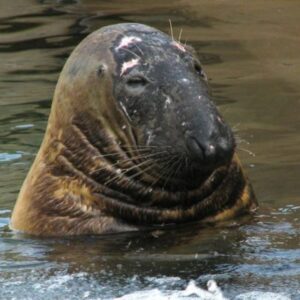
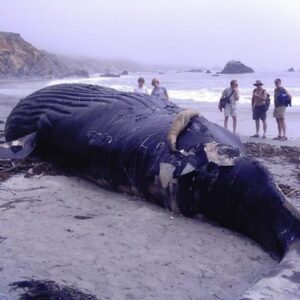
Dead animals
If a stranded marine animal is found on a beach but is already dead, it can be reported to the following organisations:
- The National Strandings Line (Cetacean Strandings Investigation Programme): 0800 6520333
- Marine Environmental Monitoring (01348) 875000
- Marine Animal Rescue Coalition (MARC) c/o Mark Simmonds @ Whale and Dolphin Conservation Society (01225) 334511
- RSPCA (0990) 555999
Causes for strandings
- Cetaceans, seals and birds are competing for ever-dwindling stocks of mackerel and herring, and often get caught up in fishing nets. The transparent mono-filament nets are lethal because they hold the animal underwater, and they will quickly drown.
- An increase in boat traffic for recreational purposes means that disturbance or injury through collision with boats is another risk for marine animals.
- Chemicals from pollutants can become concentrated in fish and then can cause nervous system damage and other medical problems in the animals that eat them. Many pollutants such as plastics, chemicals and sewage are also extremely harmful.
- Plastic bags are often mistaken for jellyfish or squid and, if swallowed, can block up the stomach, killing the animal – this is a common cause of death in seals, turtles and cetaceans alike.
- Underwater noise from shipping traffic, seismic surveys, sonar, drilling or underwater explosions can cause permanent hearing damage to cetaceans relying on echolocation, impairing the animals’ ability to sense their environment – sudden acoustic pressure can even cause severe ear and brain damage and death.
- Stormy weather may be enough to exhaust an animal and cause it to wash up – especially seals are occasionally found on beaches after storms.
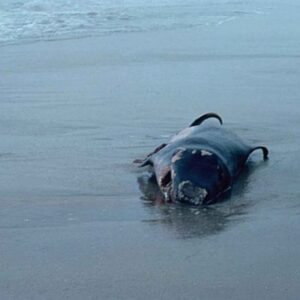
More information on
Dolphins, whales and porpoises
Dolphins, whales and porpoises all belong to a group of marine mammals known as cetaceans. These all have streamlined bodies and extremely strong tails for efficient propulsion through the water. They breathe air (like other mammals) through a blow hole in the top of their heads, and hold their breath when diving by closing it. These mammals can dive for long periods of time and to very large depths.
Cetaceans use a series of whistles and clicks as echolocation to communicate with other members of their group, and also to navigate and find prey. They are all extremely intelligent and adapted to live in large open stretches of sea in contact with many others. Anglesey Sea Zoo does not keep such creatures in captivity because no aquarium can do justice to their natural habitat.
About twelve species of cetaceans can be seen around the coast of Britain. The harbour porpoise and the bottlenose dolphin are the most commonly spotted around Wales, with the most regular sightings in Cardigan Bay. Whales are seen far less often because of their tendency to stay further off-shore, and to dive deeper for longer periods.
About thirty-five cetaceans strand each year on the coastlines of Britain. The majority tends to be larger whales that have made navigational errors and regularly end up on the shores of northern Scotland. Success in getting these creatures back into the water depends on their reason for stranding. The most common reasons for stranding are illness and navigational mistakes, with mass strandings usually due to a group following one individual to shore. If the animals are healthy, then the prognosis is usually good, particularly if they are not stranded for long.


